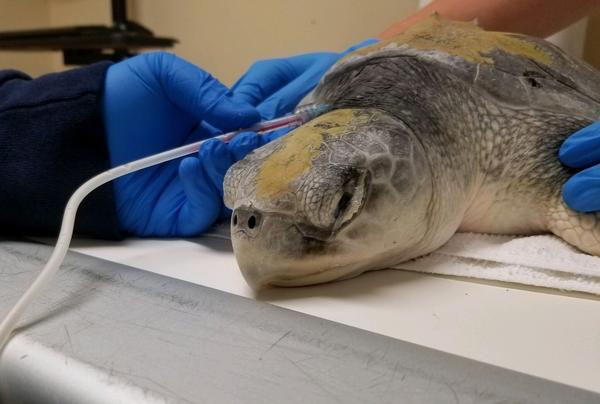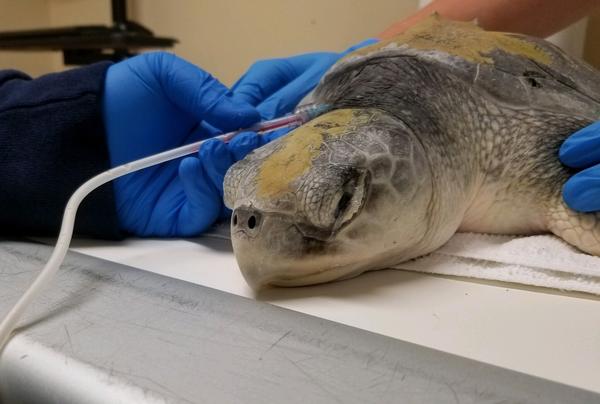A Drug Treatment For Humans Is Working To Detox Red Tide-Affected Turtles


Toxic blooms of red tide are the scourge of Southwest Florida’s sea turtles, who often find themselves stranded onshore or killed after ingesting too many of their deadly brevitoxins.
But researchers and wildlife veterinarians around the state are finding that what treats toxicity in humans – namely, a treatment used for drug overdoses – also works on the four-legged flippers.
Turtles that have high levels of toxic exposure to red tide – called brevitoxicosis – can have muscle tremors or become comatose. In one unusual case, researchers say they found a sick turtle whose brevitoxicosis led to full-blown seizures.
The brevitoxins released by red tide bind to fatty tissue in the body, like in the liver or fat deposits. Intravenous lipid emulsion uses injections straight into the bloodstream – that’s the “intravenous” part – of lipids, or fats, to give those toxins something else to bind to.
“We pump it right into the bloodstream,” said Justin Perrault, director of research at Loggerhead Marinelife Center, “and what the vets are reporting is that turtles are recovering from their symptoms in 24 hours, whereas before symptom recovery could take days to weeks, to even months.”
Charles Manire, Loggerhead’s director of rehabilitation, said there are some turtles that have taken four or five months to return completely to normal after the red tide treatment, but the norm is more like a week to a week and a half for full recovery. It’s quick enough that they’ve had to hang onto some turtles even after they’ve recovered.
“Most of the time they’re healthy enough to go back before the red tide goes away,” he said, “so a lot of the time we would just keep them until it goes away.”
Perrault and the Loggerhead Marinelife Center are working with Mote Marine Laboratory and Aquarium in Sarasota and the Clinic for the Rehabilitation of Wildlife (CROW) on Sanibel Island to test the treatment on turtles and birds.
CROW brings in most of the tide-affected turtles, since red tide appears yearly in the Gulf waters off Florida’s western coast. They collect blood samples from the turtles when they’re brought in, then take additional samples at regular intervals after they’re given the intravenous lipid emulsion.

Perrault and Loggerhead are working on analyzing the samples. With a $30,000 grant from the Morris Animal Foundation, they’ve been able to purchase new equipment that allows them to analyze how toxicity in the turtles’ blood plasma changes over time in response to the treatment.
Perrault said they were expecting to see the toxicity decline rapidly, in a fairly dramatic curve, based on the animals’ rapid improvement when treated. But the researchers’ results in birds show a slower, more linear ebb in toxicity.
“In birds, the toxins aren’t actually decreasing in the blood,” he said, “but what we think is happening is the toxins are becoming inert.”
Though Perrault said the treatment has worked remarkably well – it’s been successful for all of the more than two dozen who have been treated and released so far – it only works for the turtles they can get to in time. Many of the turtles with toxic exposure to red tide that wind up stranded are already dead, he said.
Still, the treatment’s success could open the door for future uses. Some of the toxins in blue-green algae and other toxic threats also bond to fatty tissue and could similarly be treated with intravenous lipid emulsion. Intravenous lipid emulsion’s use in turtles and birds, as well as in humans for other toxins, means it may also work in ocean mammals.
 Pathways Drug Rehabilitation Luxury Addiction Treatment & Detox Center
Pathways Drug Rehabilitation Luxury Addiction Treatment & Detox Center


